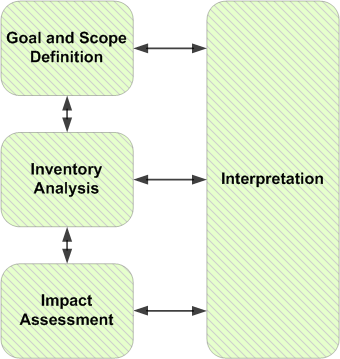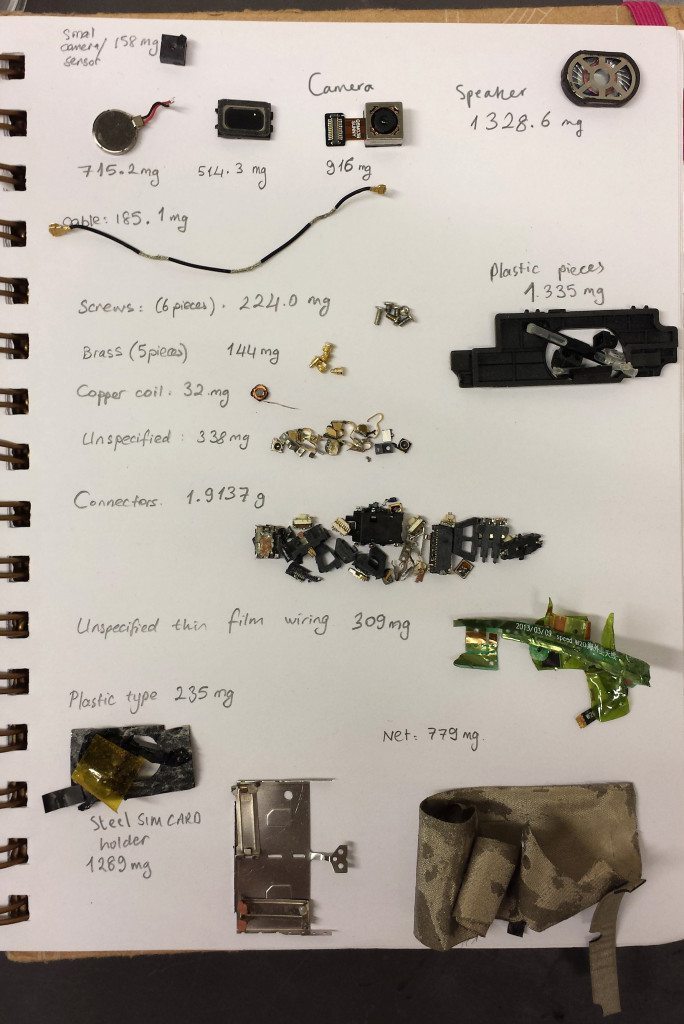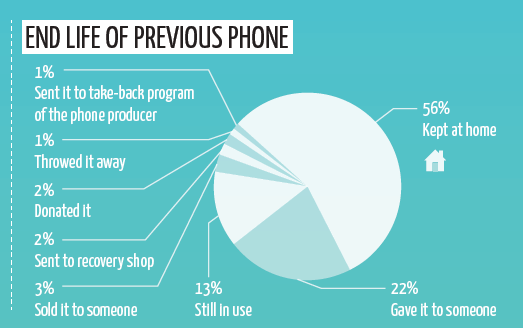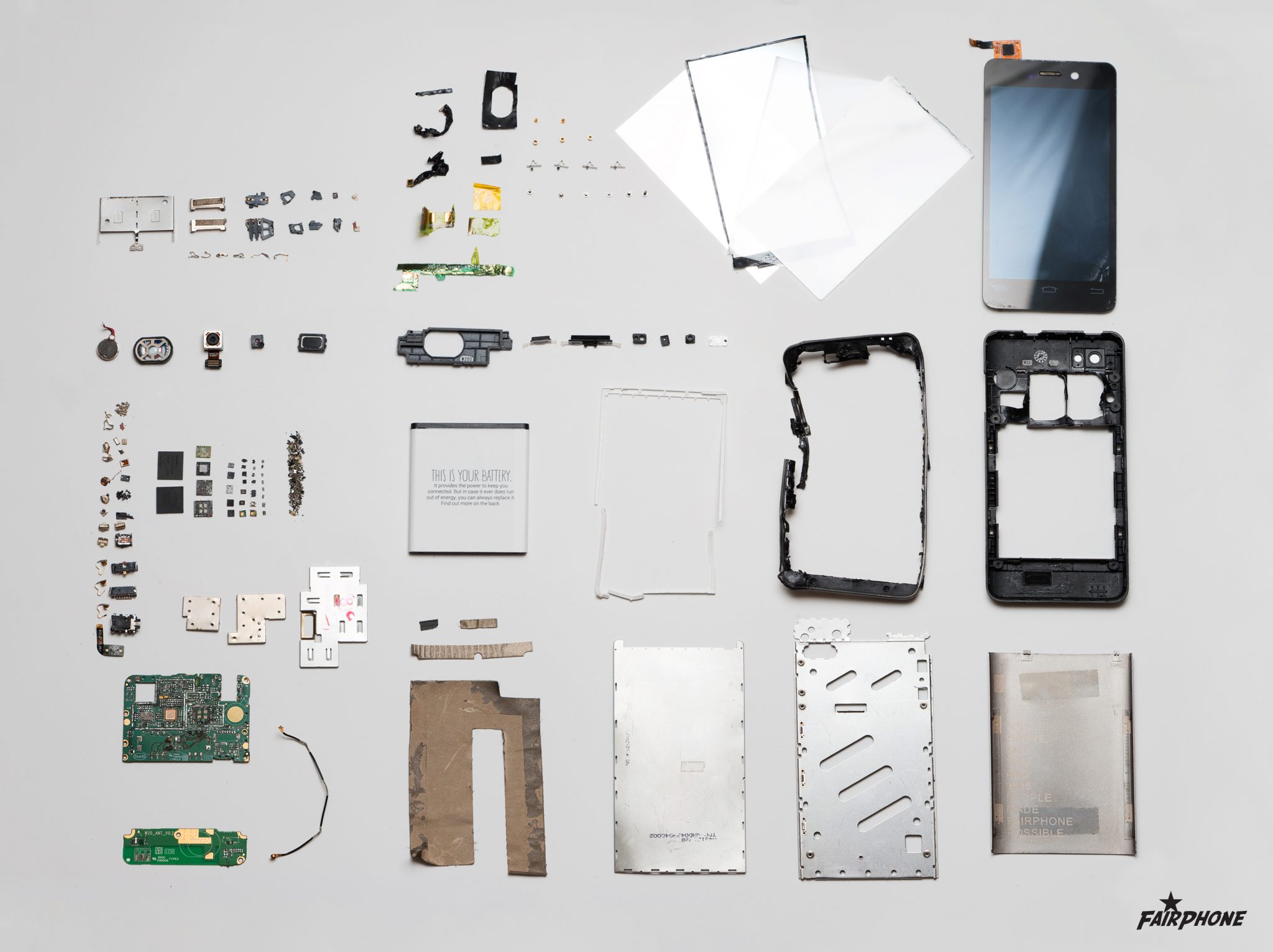Next step in Life Cycle Assessment: Inventory Analysis
Fairphone puts social values first. But what about the environment? Over the course of designing the first Fairphone, a number of decisions were made that improved the phone’s environmental impact – some on purpose, some by chance. Keep on reading if you want to learn more!
Four phases to completing a Life Cycle Assessment (LCA)
My adventures in doing a Life Cycle Assessment (LCA) at Fairphone started in January 2014 when I took over the work started by previous research assistant Artúr Szilágyi. Artúr performed the first step of an LCA known as « Goal and Scope Definition » as well as the literature research, and I have continued with the second step of LCA, « Inventory Analysis. » If you haven’t already, be sure to read Artúr’s earlier blog post about LCA.

The LCA includes four phases, starting with defining the goal and scope. This phase is followed by inventory analysis and impact assessment. Interpretation is the final step in the process.
The goal is to understand where the environmental impact arises, especially for these impact categories: climate change, mineral resource depletion and human toxicity.
Then, my goal is to identify potential impact reduction strategies for the design of future Fairphones.
Phase 2: Inventory Analysis with 500+ components
In January I started with the Inventory Analysis, which means creating an inventory of flows to and from nature within a product system – in this case the Fairphone. To start, our production project manager Mulan Mu provided me with a list of more than 500 components included in the Fairphone – an LCA researcher’s dream. But I still needed to know the weight and composition of each part, which was not included on the list. After doing some research on Google and Alibaba, I realized there had to be a better way to gather all this information. With the help of team member Nico Herzog and Waag Society’s Fab Lab, I dismantled a Fairphone into the smallest components possible.


- Fairphone owners, on average, used their previous smartphones for 2 years, feature phones for 3 years and basic phones for 4 years.
- On average, Fairphone owners get 30 hours of use from a fully charged phone.
- 56% of the owners still have previous phones at home. This highlights the importance of collecting used phones and making sure they complete their lifecycle, either to be reused or recycled.



What other decisions can be made with LCA?
LCA can also help us review shipping options from an environmental perspective. For example, we’re comparing air cargo with rail freight for the next Fairphones. If we ship them by train, the emissions will total 3.6 tons of CO2-equivalent. But emissions will be 26 times higher for the air cargo option: 95.4 tons. Unfortunately, the decision isn’t as obvious as it seems. Shipping takes far longer by train, and the security risk is much higher – in addition to other important factors. As we review our past policies on logistics operations, we will have to analyze these results for our future shipping and production workflow.
What comes next?
After finalizing the LCA model, I will identify the hotspots in the Fairphone’s life cycle, and suggest changes for current and future Fairphones.
As I mentioned previously, since the LCD screen has the highest impact in terms of greenhouse gases, I will focus on that as well as other important points.
How will we communicate the results?
The Fairphone team has had discussions with organizations that could help visualize our global supply chain on our website. As a future step, once I finalize the results, we would like to work with these partners to show where our components come from and its environmental impact.
I’ll share the final results with you in August when the assessment is complete (as it’s also my graduate thesis project). Then, I will post a summary here, plus a link to the full report if you’re keen to learn more. I hope this short introduction into LCA and making an inventory of components shows the benefits of this research towards environmental impact.
References
1. Ercan, E. M. (2013). Global Warming Potential of a Smartphone. https://www.fairphone.com/wp-content/uploads/2014/06/FULLTEXT01.pdf


